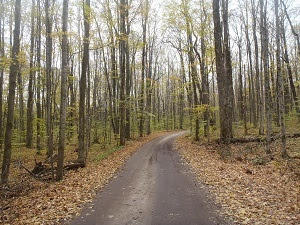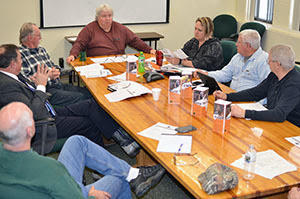By Glen Wunderlich
The U.S. House on November 16th voted 196-180 to pass a bill named the Manage Our Wolves Act. If passed by the Senate and signed into law, a 2011 rule would be reissued by the U.S. Fish and Wildlife Service (FWS), which among significant other revisions to the Endangered Species Act, would remove ESA protections for the gray wolf in the lower 48 states including Michigan.
According to the FWS, all three States of the Western Region (WGL) – Wisconsin, Minnesota, and Michigan – have wolf management laws, plans, and regulations that adequately regulate human-caused mortality. Each of the three States has committed to manage its wolf population at or above viable population levels, and this commitment is not expected to change.
The predictable hyperbolic response by the animal-rights crowd includes such language as the following: Republicans are gunning for the ESA; danger comes from conservatives; it will hurt endangered species. Almost immediately, The Center for Biological Diversity (CBD) chipped in with a lawsuit claiming passage would make wolves vulnerable to trophy hunting and trapping, halting their progress toward recovery.
The wolf population in the WGL currently occupies all the suitable habitat area identified for recovery in the Midwest in the 1978 Recovery Plan and 1992 Revised Recovery Plan and most of the potentially suitable habitat in the WGL. However, groups like CBD like to point out that only 5 percent of the original territory occupied by the wolves is now inhabited by them and that makes wolves not fully recovered. Do these folks really want to foster the establishment of wolves in the large metropolitan areas from which they throw their stones? I think not.
These city slickers have a lot of clout and that clout comes from sheer numbers of the unaffected. The phrase “tyranny of the majority” best describes the real danger of an all-powerful force of these voting blocs that could tyrannize unpopular minorities thus marginalizing individuals such as those living in sparsely populated wolf territory.
In actuality, the group of nine bills that comprises the act is aimed at the following amendments to the 45 year-old ESA to:
• encourage voluntary conservation efforts
• provide for greater certainty and improved planning for incidental take permit holders
• provide for consideration of the totality of conservation measures in determining the impact of proposed Federal agency action
• prohibit designation as critical habitat of certain areas in artificial water diversion or delivery facilities
• provide for greater county and State consultation with regard to petitions under the Endangered Species Act of 1973, and for other purposes
• require publication on the Internet of the basis for determinations that species are endangered species or threatened species, and for other purposes
• to increase State and local involvement in management plans
• provide for improved precision in the listing, delisting, and down listing of endangered species and potentially endangered species
• define petition backlogs and provide expedited means for discharging petitions during such a backlog
Under current law, plaintiffs who challenge the federal government under the ESA may be entitled to the repayment of attorneys’ fees. Such payments are made from the federal government’s Judgment Fund, which has a permanent indefinite appropriation. By prohibiting judicial review, the act could reduce the number of civil actions that otherwise would be filed and thus the potential for payments from the Judgment Fund. This would mean that taxpayers’ money could actually be used for the betterment of wildlife through projects such as enhancement of habitat rather than continuing to pad the bank accounts of animal lawyers with permanent indefinite funding.
“This is not about a hatred or fear of predators. This is about actually recognizing that the ESA has done its job, and it’s time for the wolf to be delisted,” said U.S. Rep. Cathy McMorris Rogers, R-Washington. In fact, it’s long past time.









